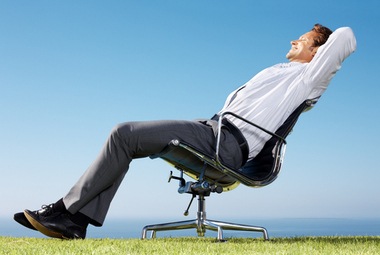You can save time, energy, and get way more done by taking naps. I know you’re in denial, but it’s true. I’ve used these techniques myself in the midst of a full-time marketing job, a part-time church job, trying to write a book, run two websites, and get married–and sometimes napping was the only way I would have been able to stay as productive as I was. But take it from actual research: Jurgen Aschoff was a German physician, biologist, and behavioral physiologist, and he ran a remarkable experiment in the first half of last century. Aschoff placed men and women, individually, into converted World-War II bunkers that blocked out all daylight. The subjects were placed in these isolation rooms for days at a time, without access to any time-keeping devices. After a 48-hour adjustment period, Aschoff found that all of the subjects had one strange, miraculous thing in common: they each became biphasic, meaning they slept for about six or seven hours at a time, then had a period of wakefulness, then went back to sleep for another “nap,” this time shorter than the first. They were falling back into the natural state of biphasic sleep cycles, adhered to by much of the animal kingdom. For those of us with “real lives,” however, we don’t have the luxury of experimentation. Rest assured, though, I’ve done the work for you! Here’s a brief outline of the best things I’ve found about adopting a napping schedule:
Getting more done. Having more motivation. Feeling more rested. Being able to wake up earlier and fall asleep later. Feeling better all the time.
Give it a shot. Before you do, though, know that napping takes practice — it won’t just come to you immediately, but once you figure it out, you’ll be able to almost “nap on command,” allowing yourself the luxury of grabbing a quick (5 to 10 minutes) snooze while at work, at home, or in traffic (just kidding!). So, how do you do it? How do you get to a state of zen in your daily life by using the power of the nap? First, you’ll need to figure out when to nap. Dr. Sara Mednick, who wrote the great book Take a Nap: Change Your Life, has this to say about the different sleep cycles we partake in during our sleep hours: The different stages of sleep are also available at different times throughout the day and night — and in differing amounts:
REM sleep is mostly available to us very early in the day, starting at 4 am and reaching its peak around 8-10 am. Slow-Wave sleep depends on when we go to bed and wake up, but generally it can be reached mostly right after we go to bed, and then again a few hours before bed. Stage 2 sleep we can enter at any time—it’s most accessible, so it’s there for taking, whenever we fall asleep.
How to use naps to your benefit
You simply need to then piece together your preferred nap: Do you need more energy? Try a late-morning nap or early-evening. Do you want to be more focused for that big project you’ve been working on? Fit in a nap built mostly on Stage 2 sleep, pretty much anytime you want (since you’re automatically in Stage 2 sleep most of the time, anyway). And finally, do you want to boost your creativity? Then try to grab a quick nap shortly after breakfast, when you’re most likely to be able to benefit from REM sleep. That’s it! Give it a shot, and leave a comment below with your thoughts. Once you try it you’ll realize that it’s not hard to do and you don’t need pills to do it. But it does, of course, take practice. (Photo credit: Businessman Relaxing via Shutterstock)
